Charles Clarke circus photographs
The Charles Clark photographs are held within the Circus & Allied Arts Collection, Milner Library Special Collections (MLSP), Illinois State University. There is an irresistible contradiction within these records. The image describes a split second moment in time, a single moment fixed through the dark room processes. Yet those depicted are anything but still. Wire walkers precariously balanced; clowns displaying the costume / make up, the results of many laborious hours preparation. Many circus acts costume are documented, though we can only see them as black & white pieces through these prints.
Clearly many negatives have decayed or been damaged through time, a not so uncommon theme of everyday archivist life! Preserving the information is critical before being lost forever, thankfully the MLSP staff have digitized these images and made available on publicly available finding aids. This article summarizes my thoughts concerning the sketching process, all the sketches have been uploaded to the gallery pages.







Browsing my own Artist Archivist archive, I stumbled upon some boring pencil drawings from c2008. I have always had difficulties using pencil style tools within my work. The marks are to thin, limiting, slow and flat. Owing to being incredibly dull to work with, my pencil drawings tend to look almost childlike in compositions. You can see a sophistication in the mark making steadily deteriorating as an ill-patient attitude develops.





Just after scrapping the first drawing I noticed some marks on the back of the paper, while I was drawing based on the records - these marks reversed the creaed image just like a photographic negative. The marks alone clearly could not inform us of their origination or purpose. The damaged paper represents the record type, the more I pushed & destroyed the drawings, the more the image becomes hidden within a variety of marks. In a sense, it ends up representing the role of the archivist in preserving information. Often parchments, negatives, have layers of dirt or damage that we have to navigate to retrieve historical information. Records within archives should never be entirely dismissed when appearing a total mess.





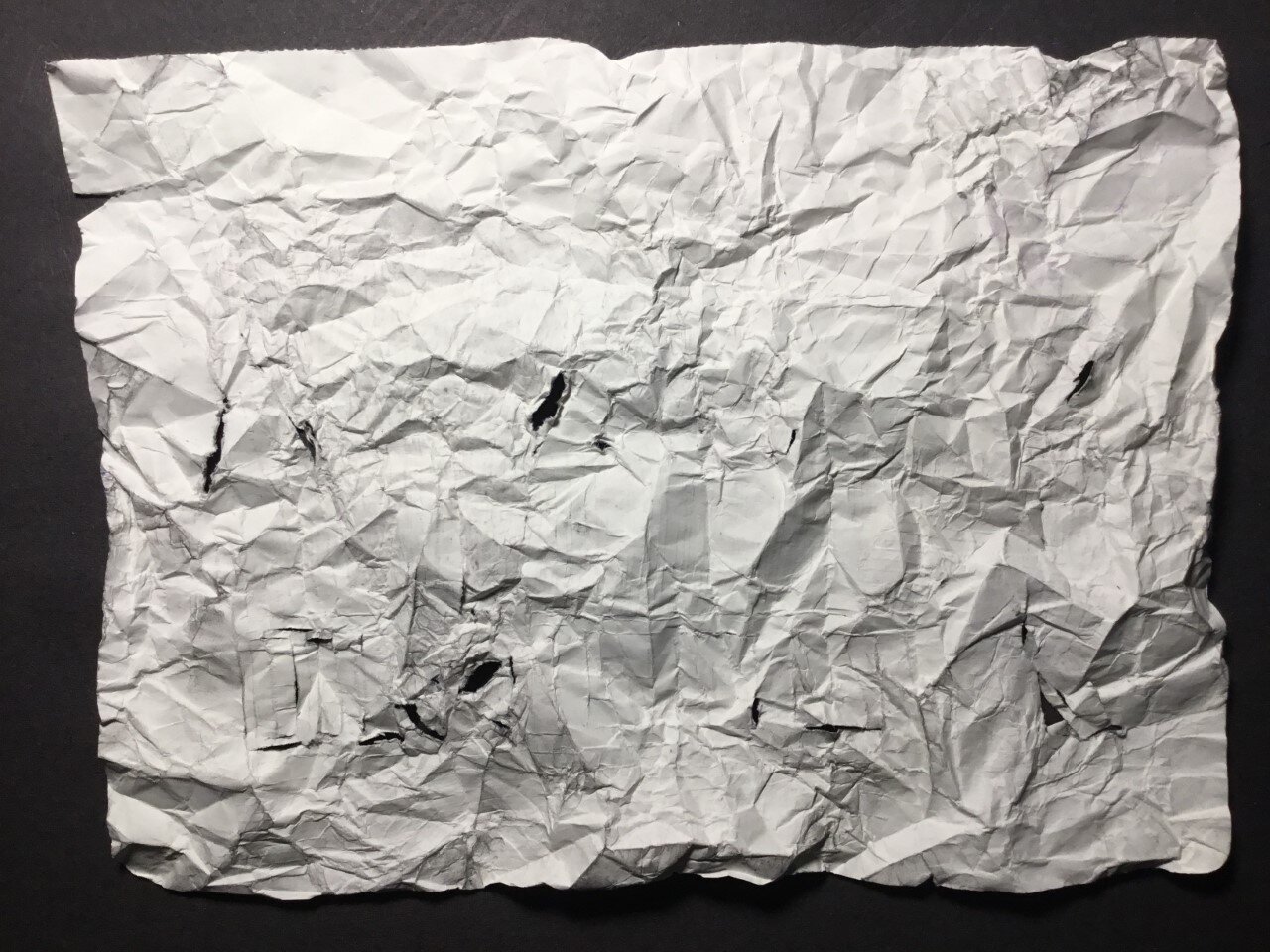
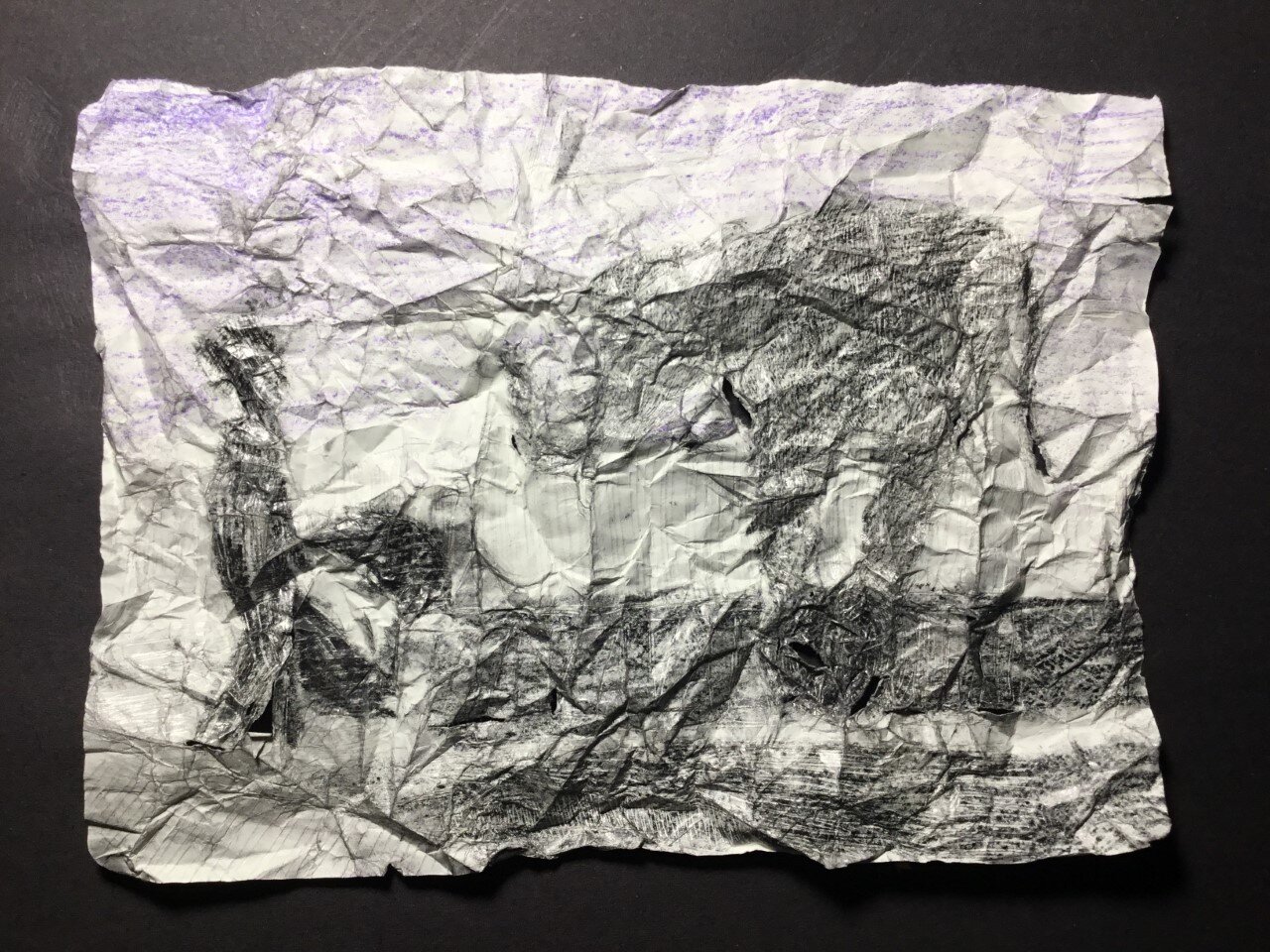

Recently I have been considering how you can apply records management working methods to the creative process. To be specific, the Records Life Cycle Model is what I have started to reference. The creative process starts at the selection of the image and subsequent drawing. The composition creation is required to be freehand and image origination identifiable. Once finished, document both sides of the paper before scrunching the material as it enters the maintenance / use stage. The paper is surprisingly resilient, breaking only in places where the pencil pressure has caused damage.
Carefully unwrapping the composition, the paper is placed under a simple small lightbox as would one of Charles Clarke circus photographs. Through the damage & new marks, careful observations can reveal the original pencil marks. To decide whether to retain the records as part of the Artist Archivist Archive, or dispose of it entirely. I perform an appraisal action to the records. Do the visual records contain enough evidential value so researchers / art viewers can see the creative process? Are these paper objects art or a visualization of the records management process? Where is the art in these drawing series?
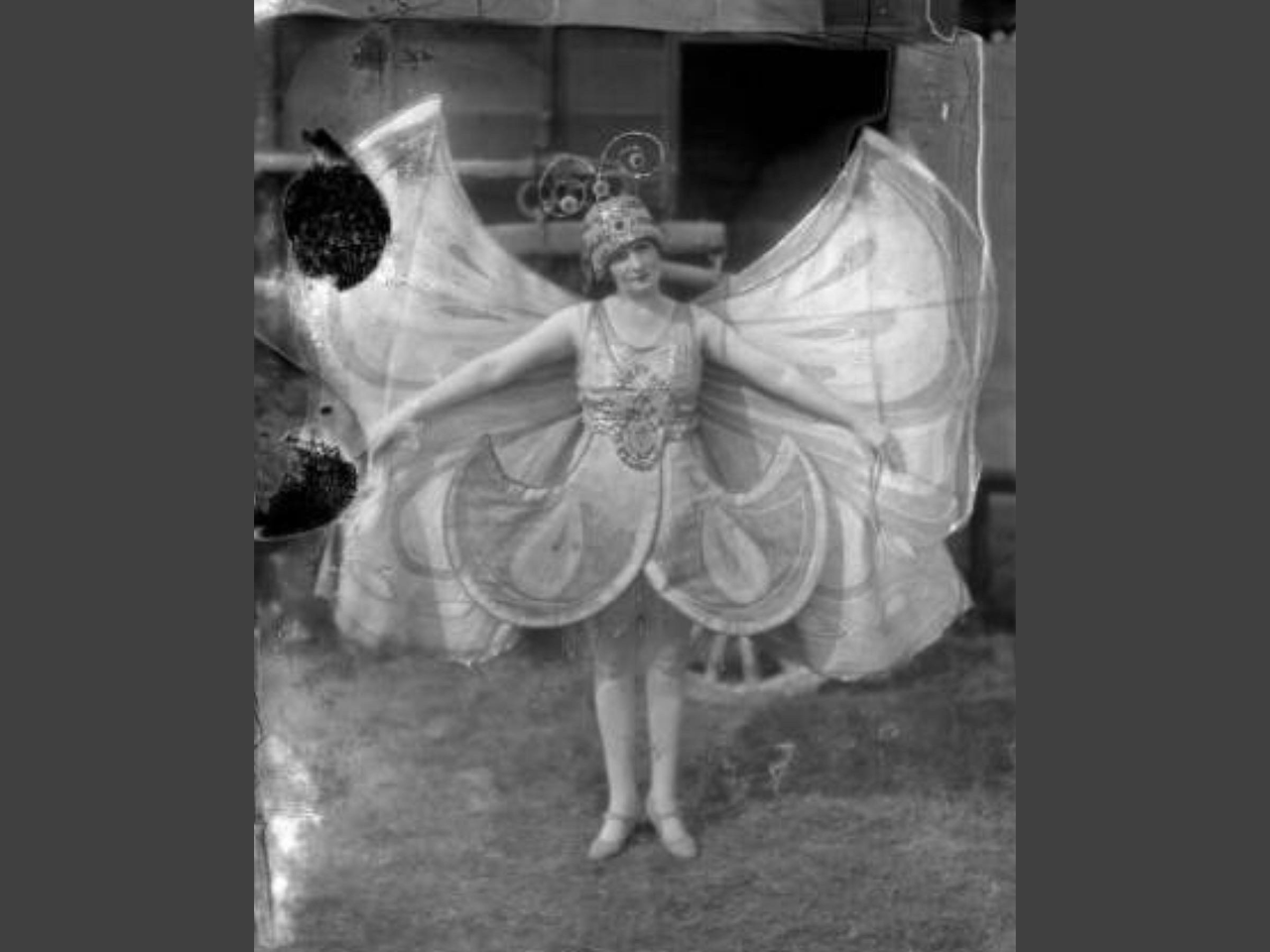









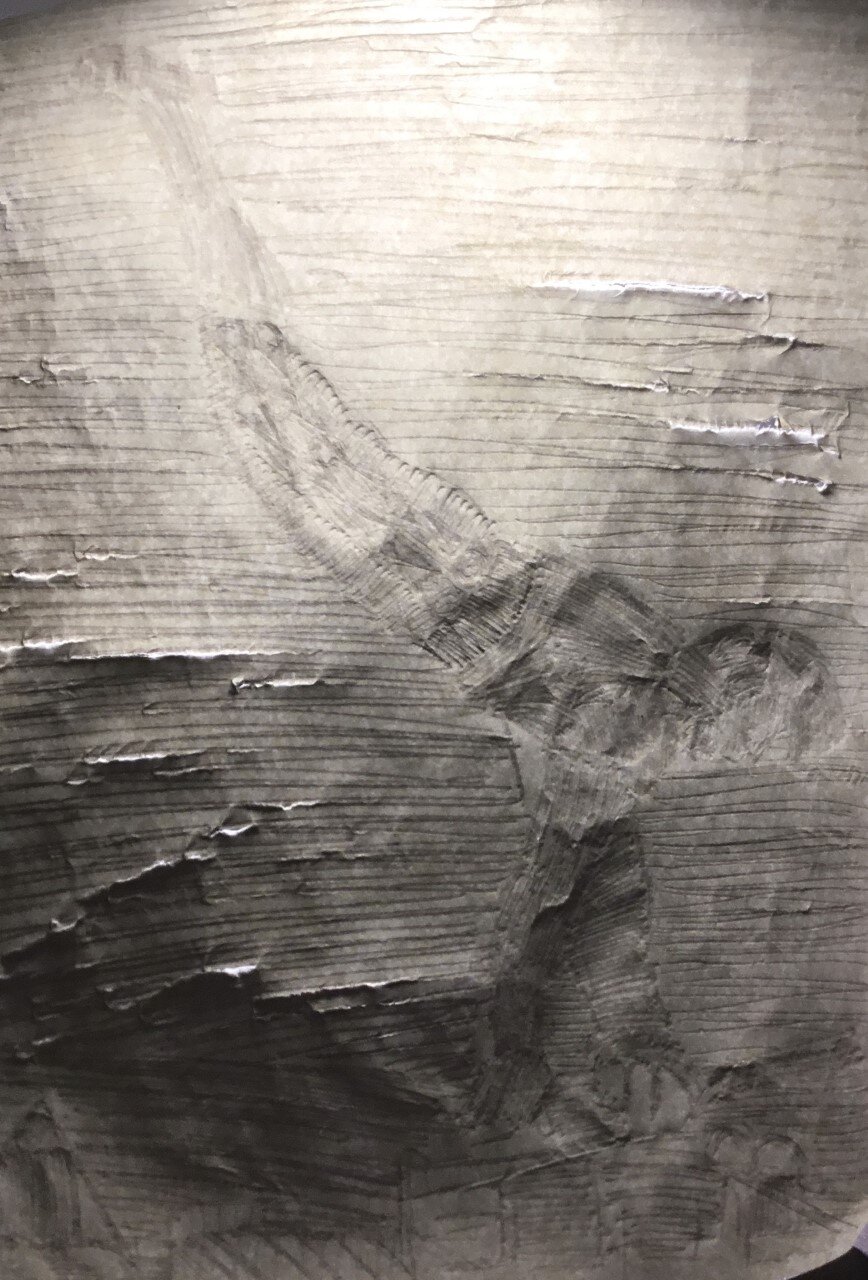


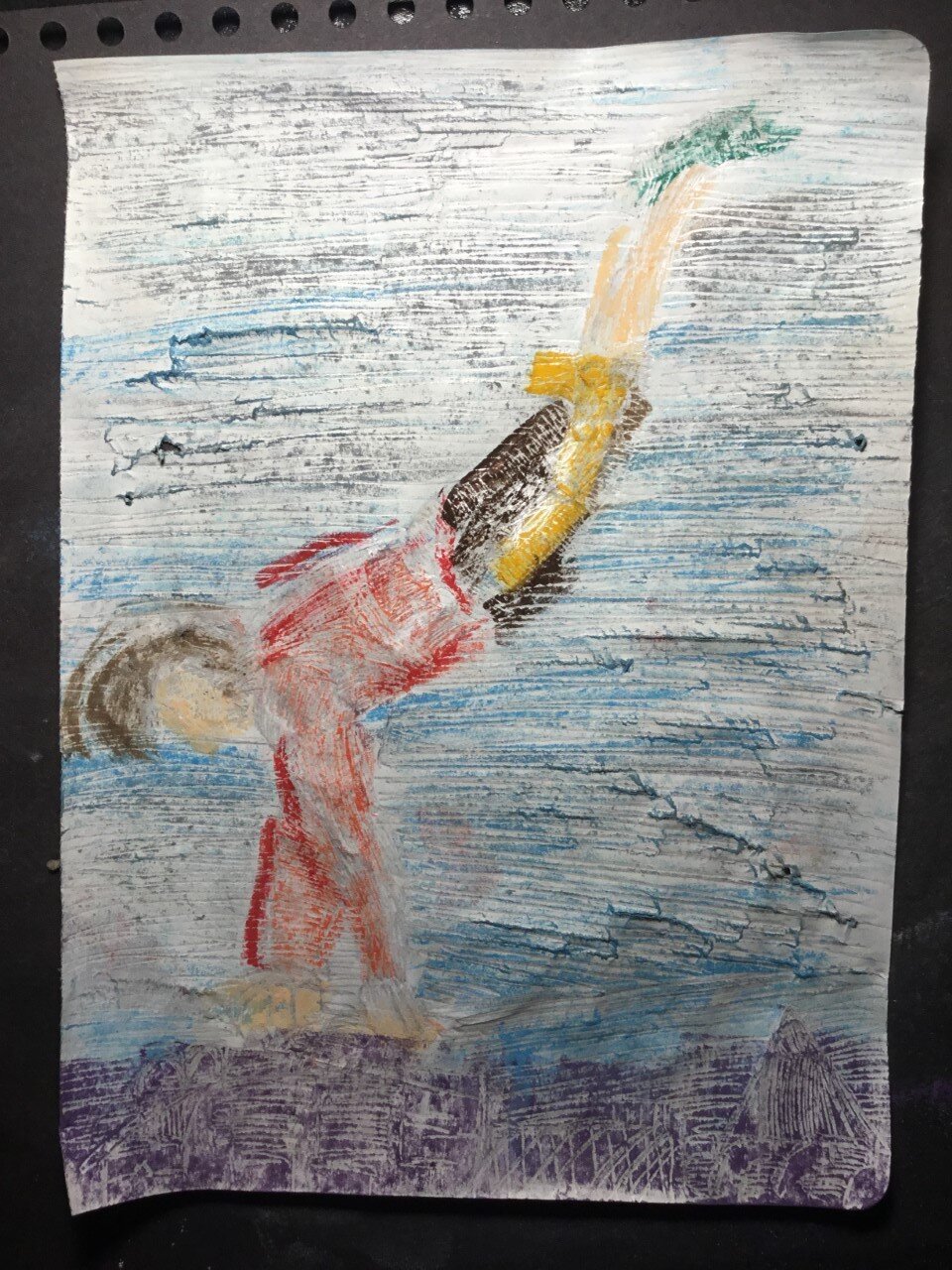

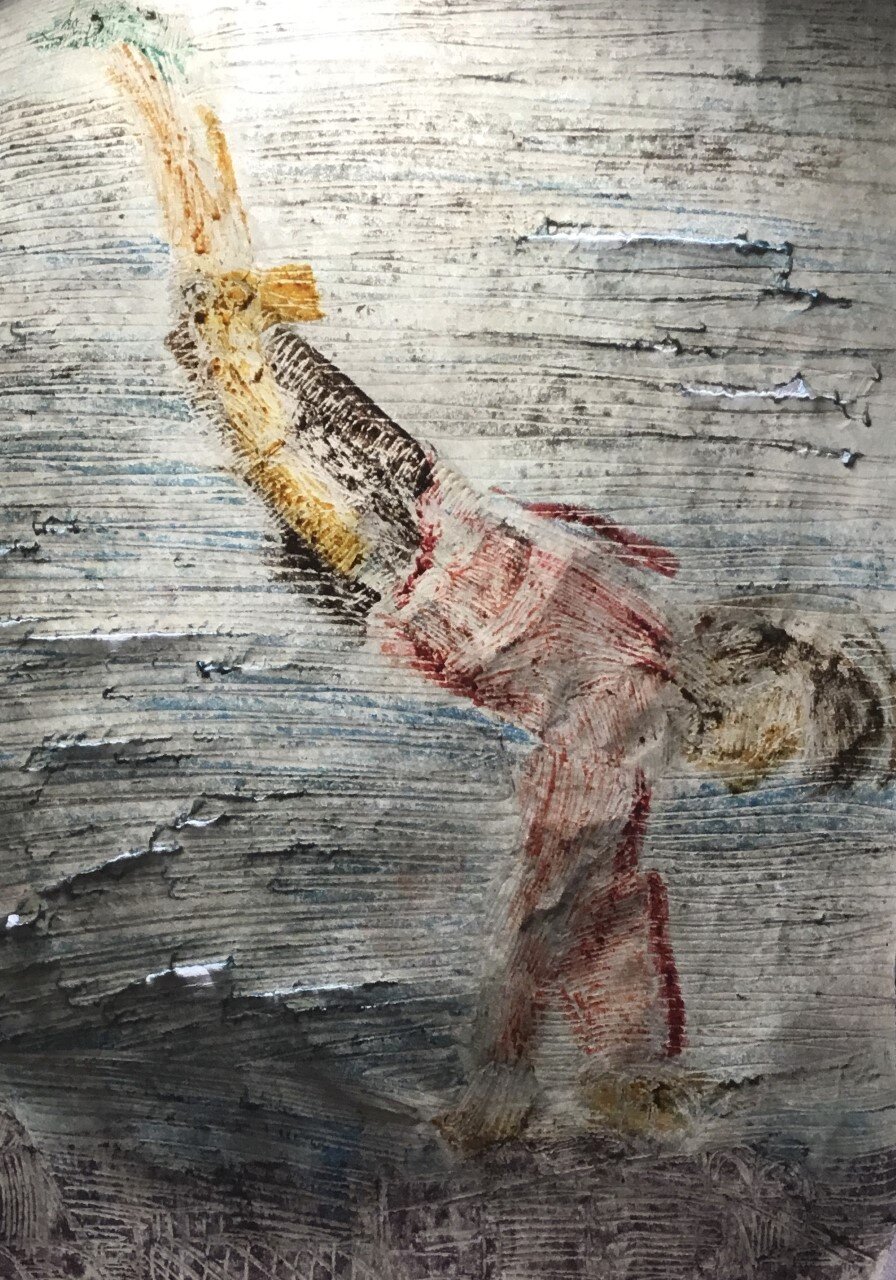
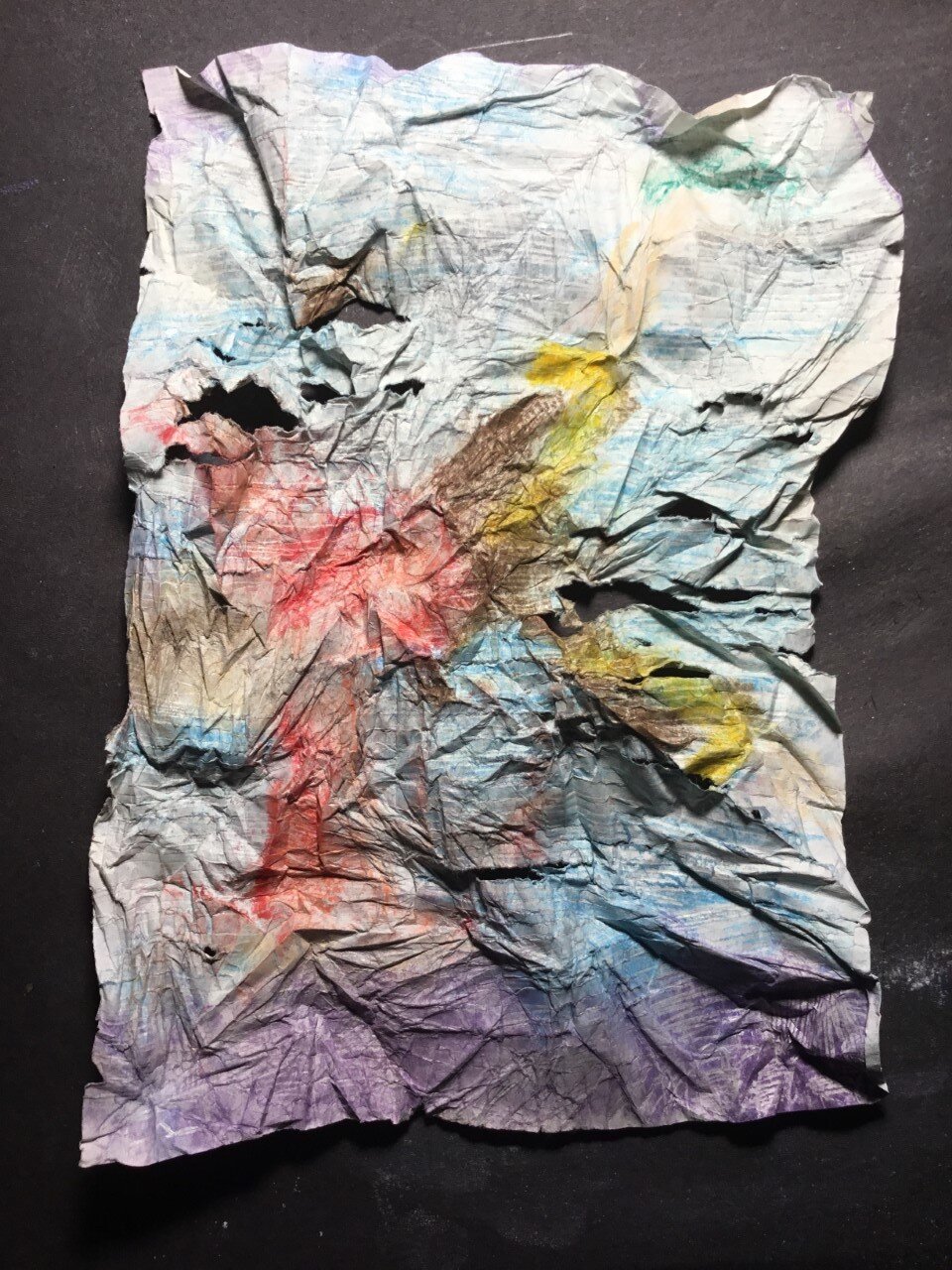
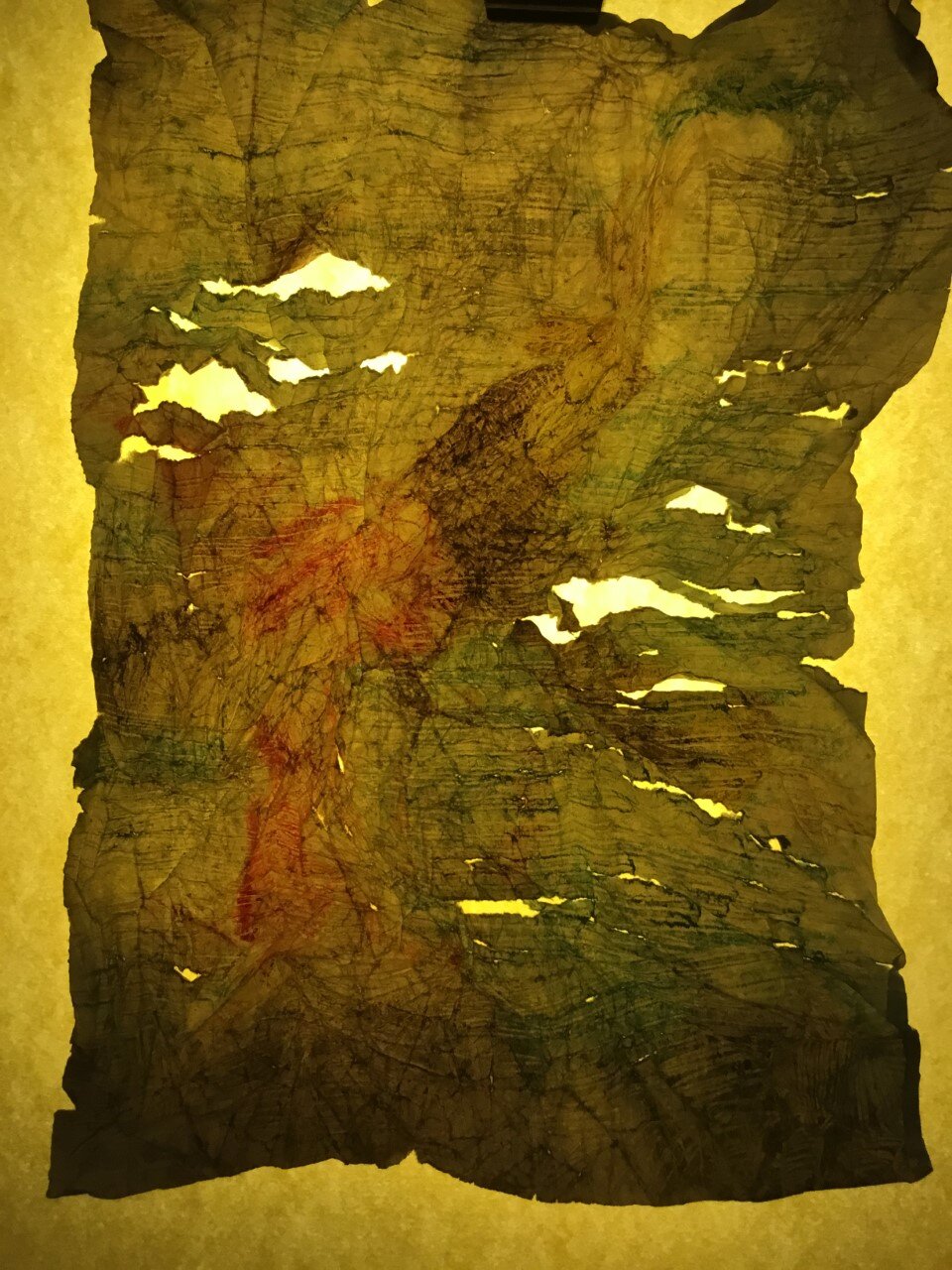













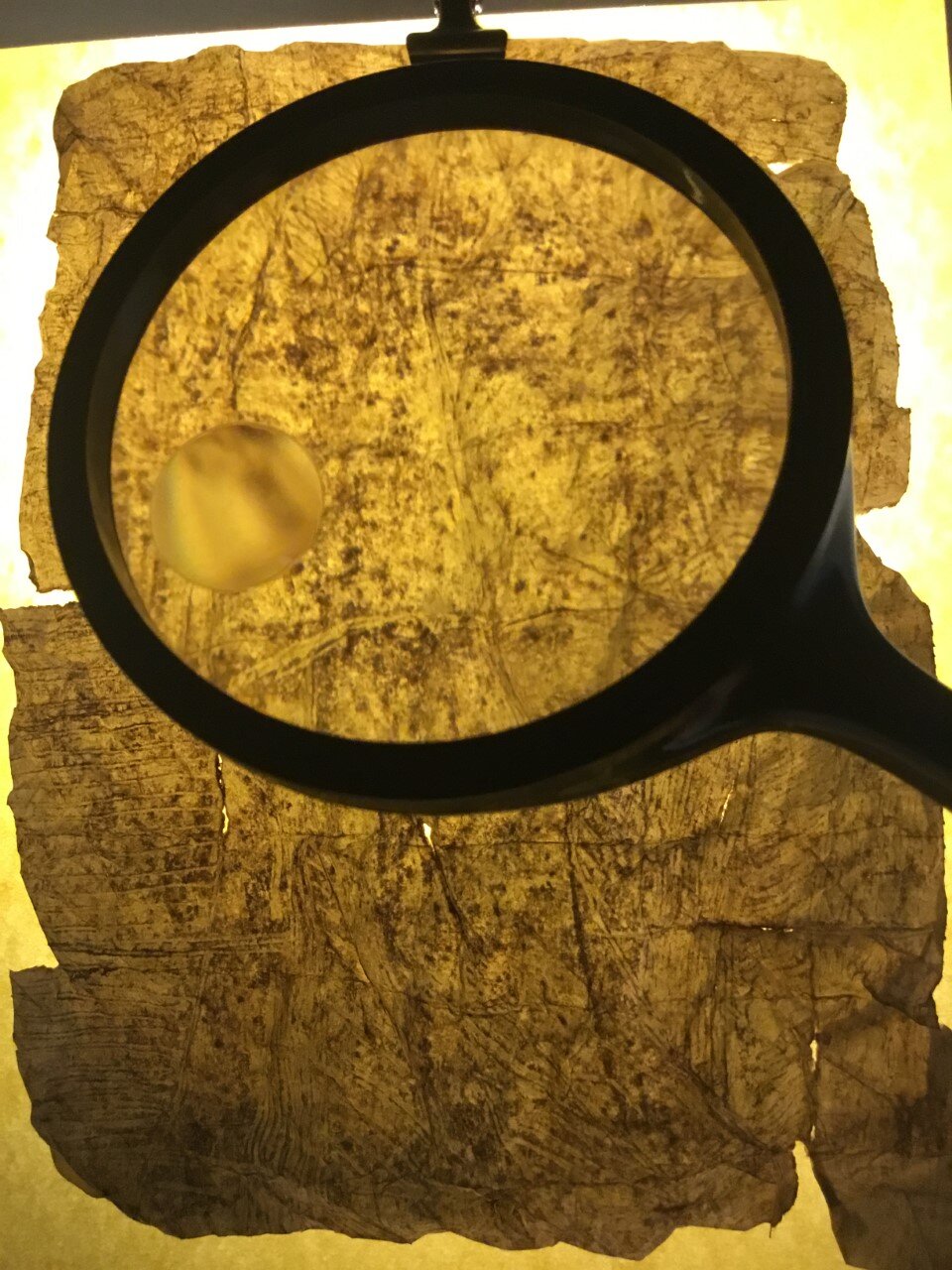
Adding to the material intrigue, each drawing material applied whether chalk, pencil, inks, had a different reaction to the process. Chalk would spread and lose it’s integrity whilst pencil marks tone brightens. The damaged paper material when retaining an obvious composition becomes it’s own art object?

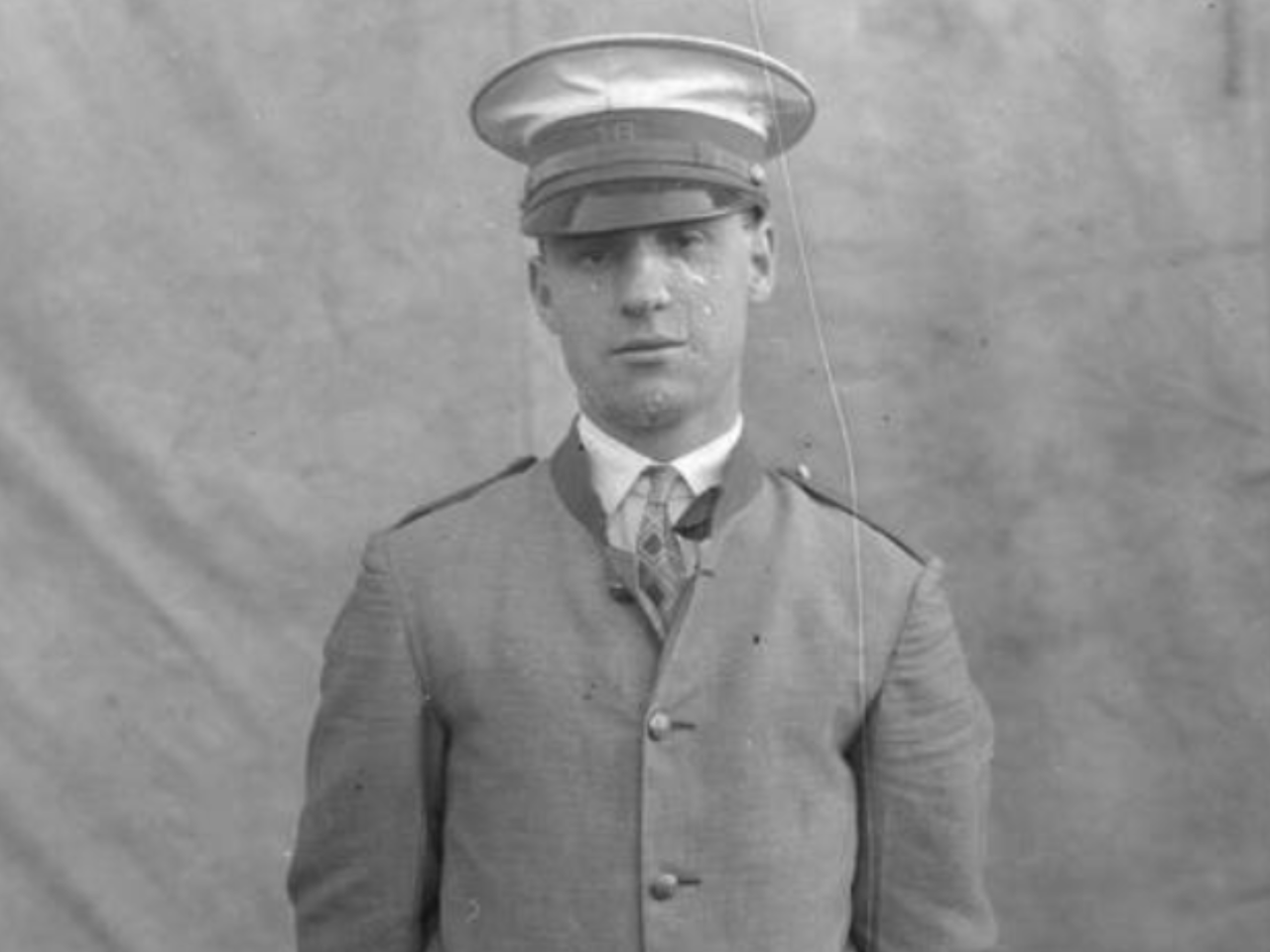












When curating the compositions as layers together, an incredible structure is revealed. How much of the construction context, historical information is hidden or described in the paper sculptures?

